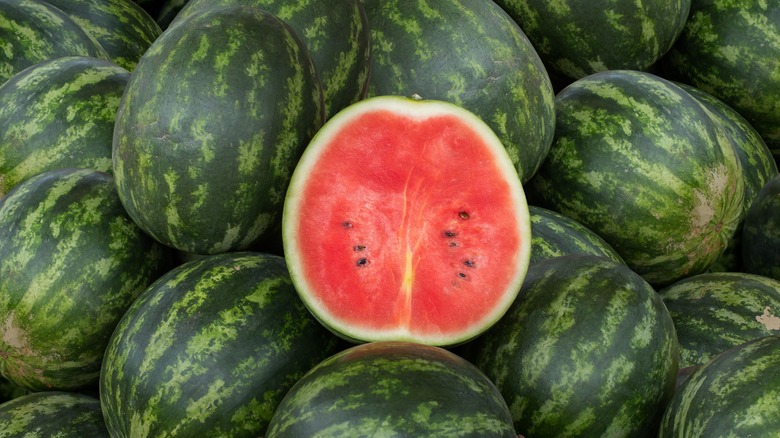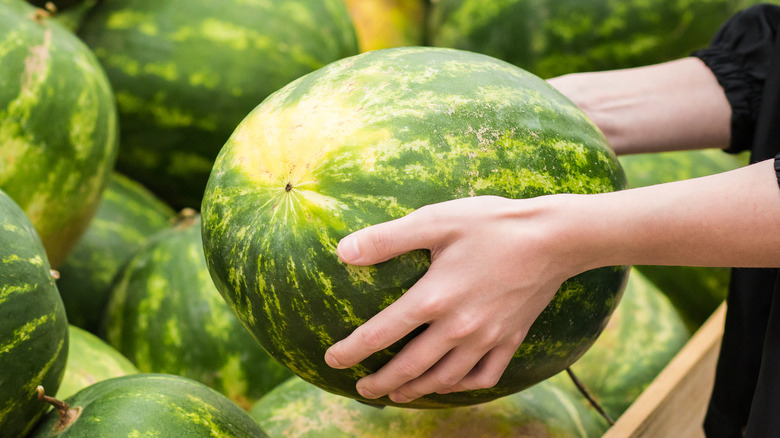Why You Should Always Lift A Watermelon Before Buying It
Is there anything quite as refreshing on a sweltering summer day as a juicy watermelon? That crisp and cooling texture as you bite into it. That burst of sweet and juicy flavor. There's nothing else quite like it! Whether you're enjoying them sliced as is, grilled, as part of a salad, soup, or dessert, or in a refreshing lemonade, cocktail, or boozy slushie, watermelons are a staple of summer barbecues, picnics, and pool parties all over. As a bonus, watermelons are also low in calories, contain no fat, and are a good source of antioxidants like beta-carotene, lycopene, and vitamin C, according to the Food Network. Talk about amazing!
What's not amazing is cutting into a watermelon that's not ripe enough, or one that's too ripe. Unlike many other fruits, watermelons don't continue to ripen further after they've been removed from the vine (via Masterclass), so picking the right, perfectly ripe, one is especially crucial. So how can you avoid those lackluster duds and pick the right watermelon, one that is perfectly ripe, sweet, juicy, and delicious? It can be as easy as picking up the watermelon.
Lifting a watermelon can help determine how juicy it is
As you're choosing between different watermelons from a roadside stand, at the farmers market, or in the produce section of your favorite grocery store, you should always lift them up. In fact, you should lift up a few watermelons to feel their weight, and then select the one that feels the heaviest relative to its size, recommends the experts at the National Watermelon Promotion Board. As the name suggests, watermelons are mostly made up of water — 92% in fact, according to the Food Network. As Healthline explains, the heavier a watermelon feels, the more water it contains, and the sweeter and riper it is.
Besides lifting up the watermelon, you can also give it a thorough once over and look for visual clues, like considering the shape of the watermelon and picking the more symmetrical watermelon with a plump and filled-out shape and smooth rinds. You could also try everyone's favorite tapping technique for watermelons. Turns out, there is some science behind the tapping method, so tap away with your finger and listen for the sound back — if it's high pitched, it's not ripe enough; if it's a low thud, it's too ripe; and if it's a hollow sound, it should be just right.

